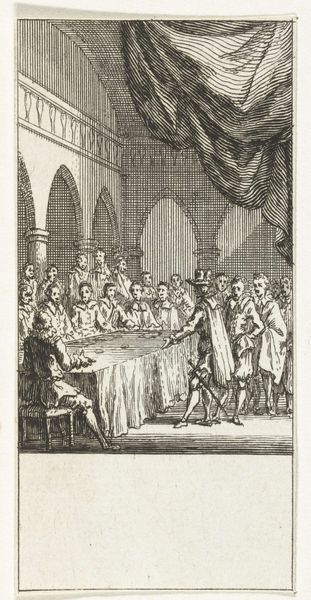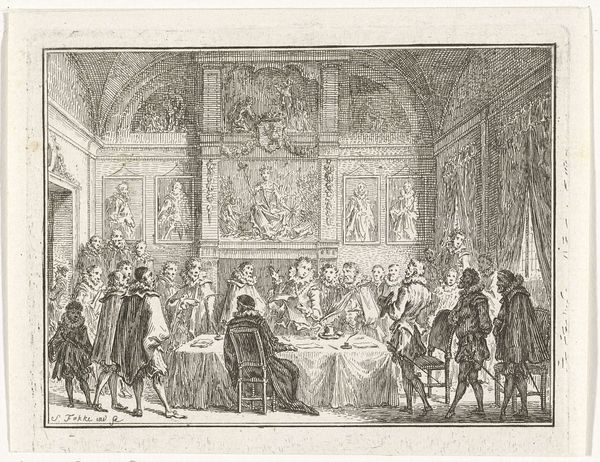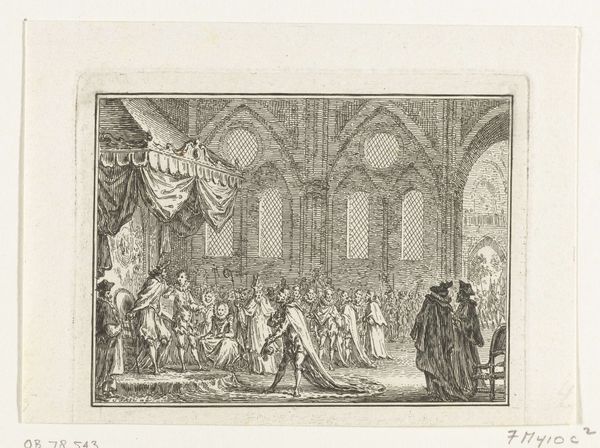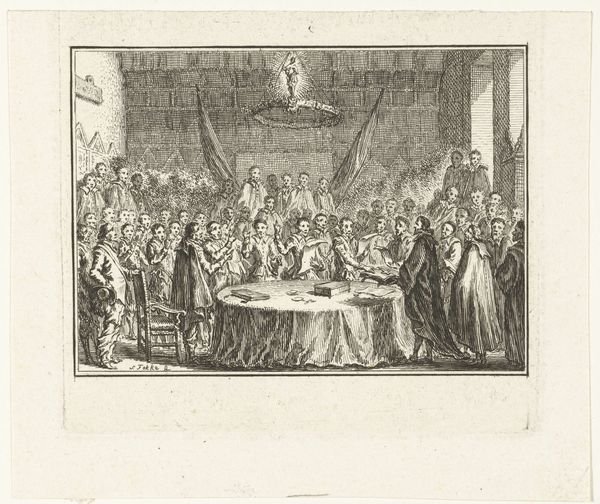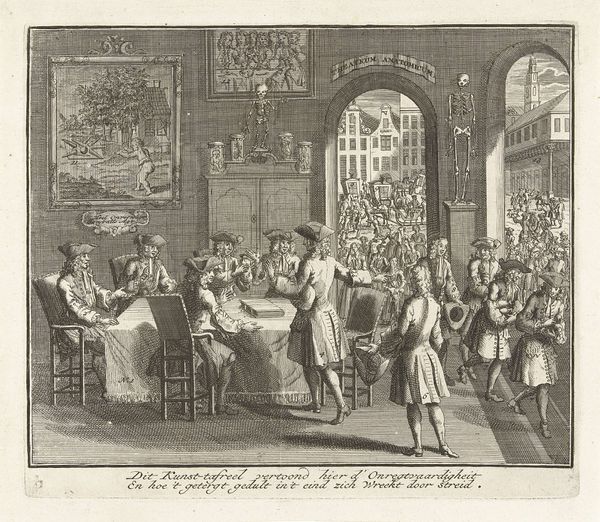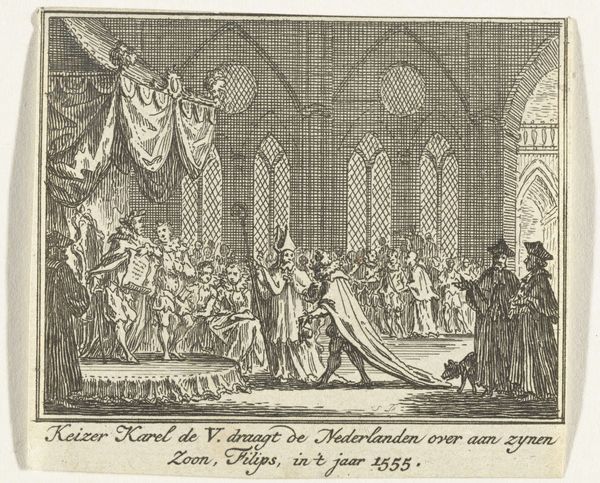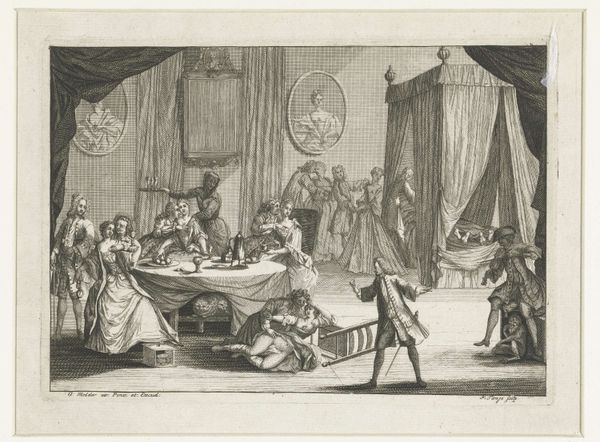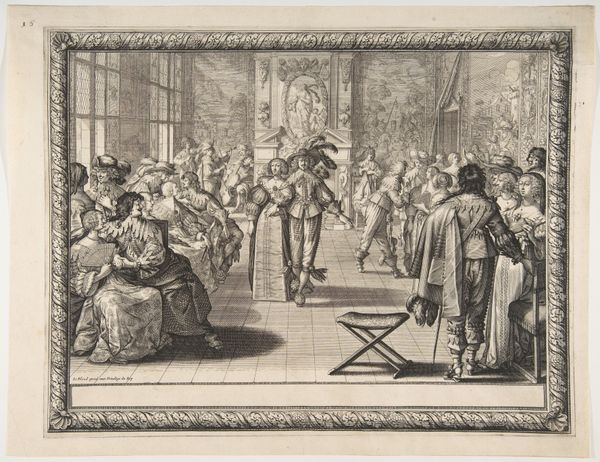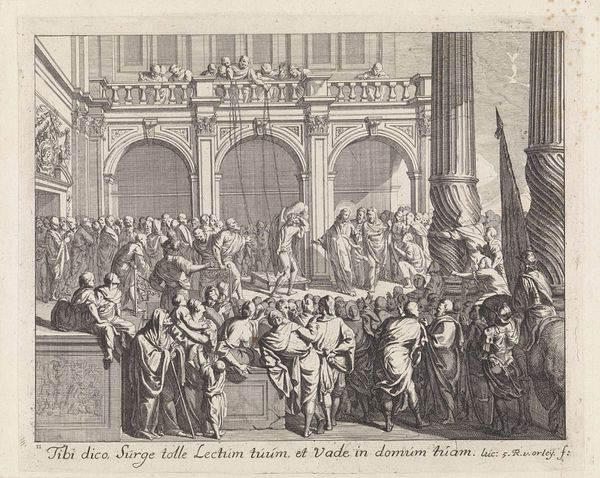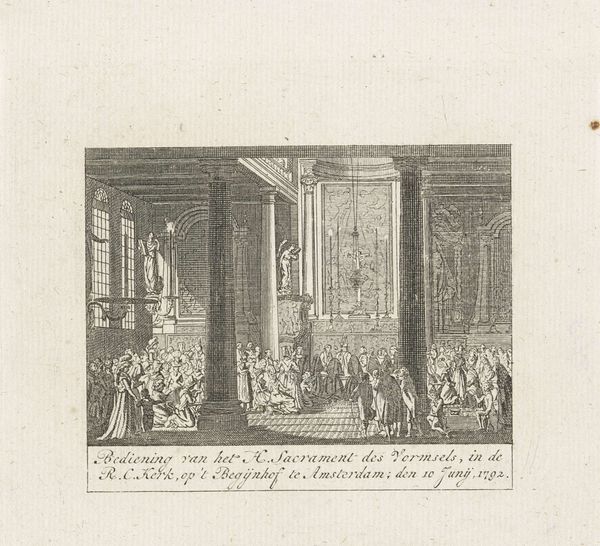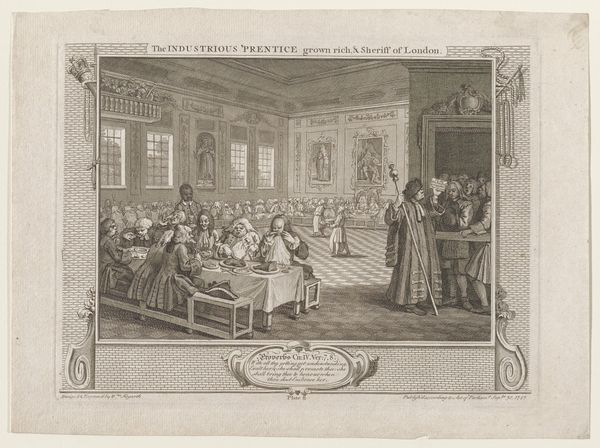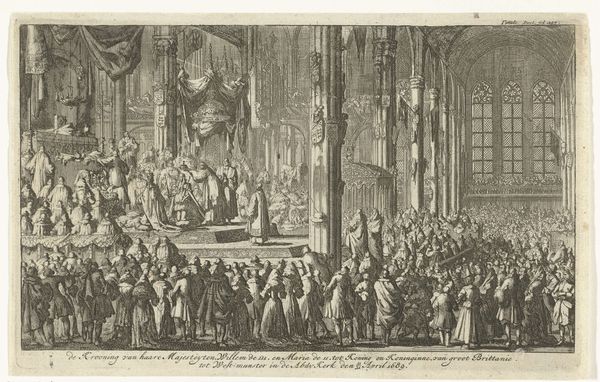
print, engraving
#
portrait
#
narrative-art
#
baroque
# print
#
old engraving style
#
figuration
#
group-portraits
#
line
#
history-painting
#
engraving
Dimensions: height 91 mm, width 116 mm
Copyright: Rijks Museum: Open Domain
Curator: I’m drawn to the visual rhetoric in this 18th-century engraving, “Arminius en Gomarus gehoord door de Staten, 1609,” attributed to Simon Fokke and housed here at the Rijksmuseum. Editor: My immediate response is one of stark austerity. The limited tones, combined with the density of figures, creates a powerful atmosphere of scrutiny. Curator: Absolutely. The scene depicts a pivotal moment, where theologians Arminius and Gomarus presented their differing views before the States-General, a religious dispute that fractured the Dutch Republic. Fokke captured this historical debate. Look at how he carefully employs line to create depth and shadow, almost evoking the gravity of the situation through ink itself. Editor: Yes, it’s almost like the very air in the room is thick with religious and political tension, visible in every mark of the engraver's tool. The social context of this theological clash—with its consequences for political and personal identity—feels strikingly modern in its implications. I’m especially interested in the visual construction of power here, look at the gazes, at who is allowed to be where in the scene, the negotiation and visual consolidation of the governing States within the picture. Curator: Indeed, this print preserves a significant ideological juncture. Fokke used established iconographic conventions to convey the authority of the States-General. Consider the symbolic placement of the figures, mirroring a judicial tableau—visual emblems of power dynamics, embedded in the narrative itself. We have religious ideologies here, political agendas, and societal influences coming together. The narrative reminds us of the potency that visual representation carries across eras. Editor: This visual language definitely transcends its historical setting, reflecting similar themes that continue to resonate across centuries and cultural divides, especially for political contestation and ideological dominance. This image continues to prod us, really—prompting conversations about truth, conviction, and social consequences that affect identities across multiple intersecting fields.
Comments
No comments
Be the first to comment and join the conversation on the ultimate creative platform.
